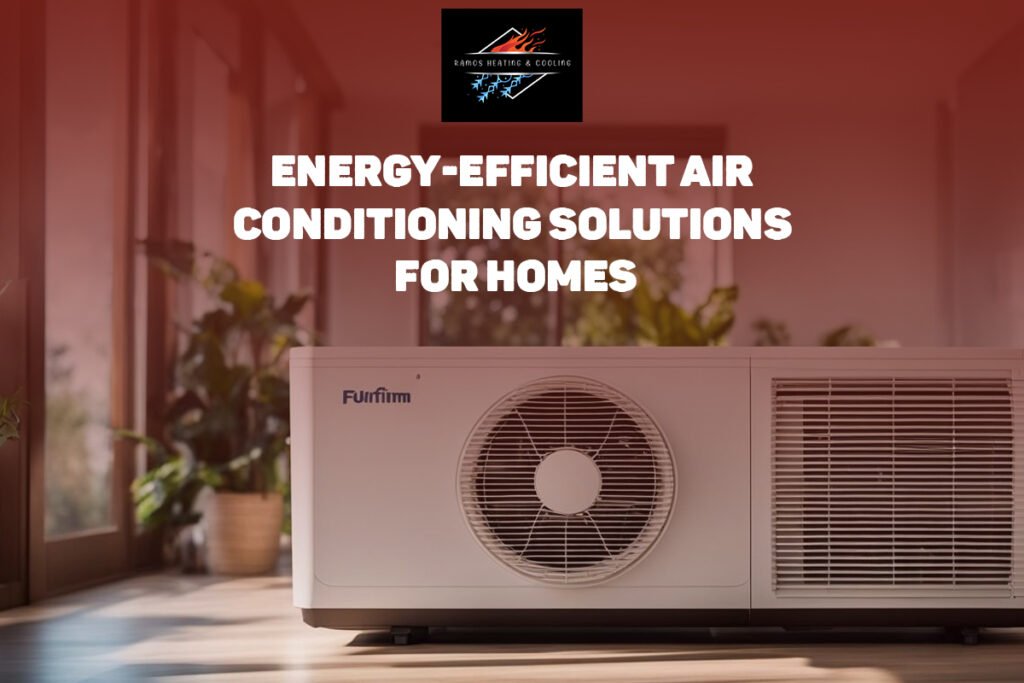As temperatures rise, keeping our homes cool becomes a top priority. Still, traditional cooling styles can be both expensive and energy- ferocious. Fortunately, advancements in technology have introduced energy-effective air exertion results that not only maintain comfort but also reduce energy consumption and lower mileage bills. In this companion, we’ll claw into colorful energy-effective cooling options, their benefits, and practical tips to enhance your home’s cooling effectiveness.
Understanding Energy Efficiency in Air Conditioning
Before exploring specific results, it’s essential to grasp what makes an air exertion system energy-effective. The effectiveness of cooling units is frequently measured by the Seasonal Energy Efficiency rate( foreseer). An advanced foreseer standing indicates lesser effectiveness. For case, ENERGY STAR certified central air conditioning have advanced foreseer conditions, icing effective performance.
High- effectiveness HVAC Systems
Ultramodern HVAC systems are designed with energy effectiveness in mind. Features like variable speed motors and advanced compressors allow these systems to acclimate cooling affair grounded on the home’s requirements, reducing gratuitous energy consumption. Investing in a high-impact HVAC system can lead to significant energy savings over time.
Heat Pumps Binary- Function effectiveness
Heat pumps are protein biassed that give both heating and cooling. They work by transferring heat between the indoors and outside. Air- source heat pumps are common and suitable for moderate climates, while geothermal( ground- source) heat pumps offer advanced effectiveness by exercising the earth’s stable temperatures. Geothermal heat pumps are among the most energy-effective systems available, as they calculate the harmonious temperature of the earth, reducing the need for fossil energies.
DuctlessMini-Split Systems
Ductless Mini-split systems correspond to an out-of-door compressor and one or further inner air- handling units. They allow for targeted cooling in specific areas, barring the energy losses associated with ductwork. This zoning capability ensures that only enthralled spaces are cooled, enhancing overall effectiveness. also, ductless systems are easier to install and offer inflexibility in interior design.

Variable Refrigerant Flow( VRF) Systems
VRF systems are advanced HVAC results that acclimate the inflow of refrigerant to multiple inner units. This modulation allows for precise temperature control in different zones of a structure. VRF systems are known for their energy effectiveness, especially in larger homes or structures with varying cooling requirements. They operate still and can contemporaneously toast and cool different zones, maximizing comfort and effectiveness.
Smart Thermostats Intelligent Climate Control
Integrating a smart thermostat into your cooling system enables more effective temperature operation. These biases learn your schedule and preferences, conforming temperatures consequently. They can be controlled via smartphones, allowing for real- time adaptations. ENERGY STAR certified smart thermostats offer enhanced convenience and can save roughly$ 100 annually on energy bills.
Regular conservation Keeping Systems Optimal
Regular conservation of your air exertion system is pivotal for sustained effectiveness. Simple tasks like changing air pollutants every three months can help tailwind restrictions. Also, periodic professional tune- ups ensure that all factors serve rightly, extending the system’s lifetime and maintaining energy effectiveness.
Passive Cooling ways
Beyond mechanical systems, unresistant cooling strategies can significantly reduce reliance on air exertion. Proper sequestration, energy-effective windows, shadowing, and ventilation can keep your home cool with minimum energy use. enforcing these measures can lead to substantial energy savings.
opting the Right System for Your Home
Choosing the most suitable energy-effective air exertion result depends on colorful factors, including your home’s size, original climate, and budget. Consulting with HVAC professionals can give individualized recommendations acclimatized to your specific requirements.
Wrapping Up
Embracing energy-effective air exertion results is a smart investment for both comfort and cost savings. elevation to a high- effectiveness HVAC system, using smart thermostats, and maintaining your cooling unit can significantly reduce energy consumption. Also, unresistant cooling ways like proper sequestration and shading can further enhance effectiveness. By making informed choices, you can enjoy a cool home while lowering your energy bills and environmental impact. Whether you are considering a new AC installation or optimizing your current system, energy-effective cooling is the key to long- term savings and sustainability. Stay cool, save plutocrats, and help the earth!
FAQs
Q1: What’s SEER, and why is it important?
Foreseer stands for Seasonal Energy Efficiency rate. It measures the cooling affair of an air conditioner divided by its energy consumption over a typical cooling season. An advanced foreseer standing indicates a more effective unit.
Q2: How frequently should I replace my air sludge?
It’s recommended to check your air sludge yearly and replace it at least every three months, especially during heavy use ages like summer and downtime.
Q3: Are heat pumps effective in cold climates?
Yes, ultramodern heat pumps are designed to operate efficiently indeed in colder climates, furnishing both heating and cooling results.
Q4: What are the benefits of a smart thermostat?
Smart thermostats offer automated temperature adaptations grounded on your schedule, remote control via mobile bias, and implicit energy savings by optimizing HVAC operation.
Q5: How can I ameliorate my home’s unresistant cooling?
Enhancing sequestration, installing energy-effective windows, exercising shading bias like canopies, and icing proper ventilation can ameliorate unresistant cooling in your home.
